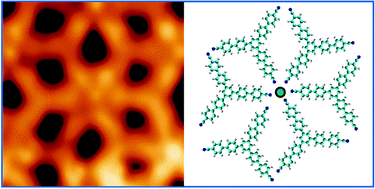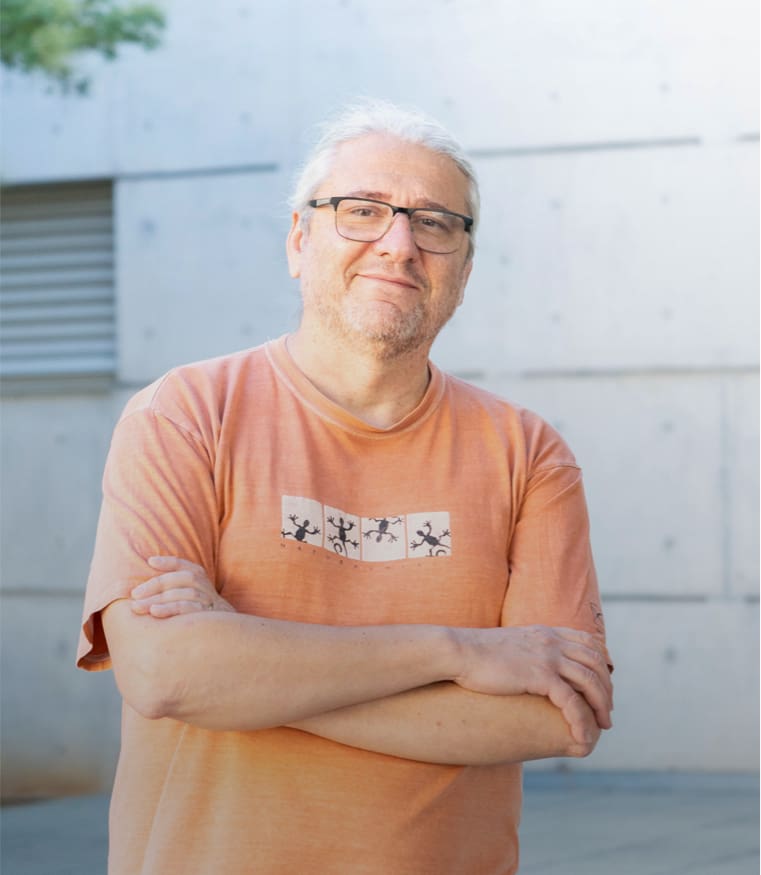Dysprosium-directed metallosupramolecular network on graphene/Ir(111)
The interest in exploiting the unique properties of lanthanides has led to the recent design of two-dimensional coordination networks incorporating f-block elements on metallic surfaces. In order to take this field to the next step of progression, it is necessary to electronically decouple these two-dimensional architectures from the metallic surface underneath. As a first step in this direction, we report the formation of dysprosium-directed metal–organic networks employing three-fold ligands as molecular linkers equipped with terminal carbonitrile functional groups on weakly interacting substrates such as Au(111) and graphene/Ir(111). We observe on both substrates identical quasi-hexagonal Dy–carbonitrile coordination networks based on majority five-fold nodes. Our findings provide perspectives for the formation of lanthanide coordination networks on graphene and related sp2 materials grown on metals.

Moreno, D.; Cirera, B.; Parreiras, S. O.; Urgel, J. I.; Giménez-Agulló, N.; Lauwaet, K.; Gallego, J. M.; Galán-Mascarós, J. R.; Martínez, J. I.; Ballester, P.; Mirandaae, R.; Écija, D.
Chem. Commun. 2021, 57, 1380-1383
DOI:
10.1039/D0CC07315F

Let's create a brighter future
Join our team to work with renowned researchers, tackle groundbreaking
projects and contribute to meaningful scientific advancements





















